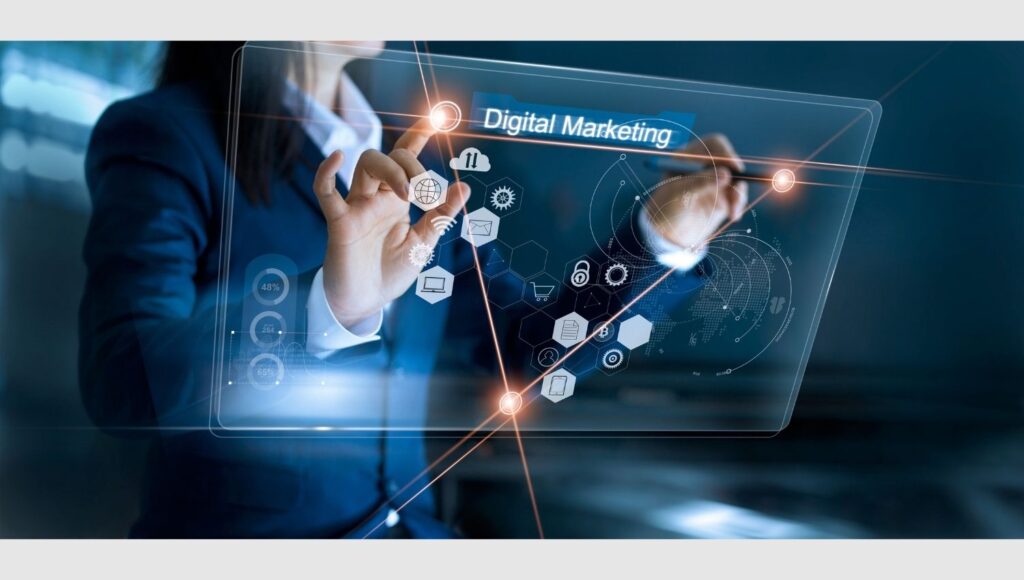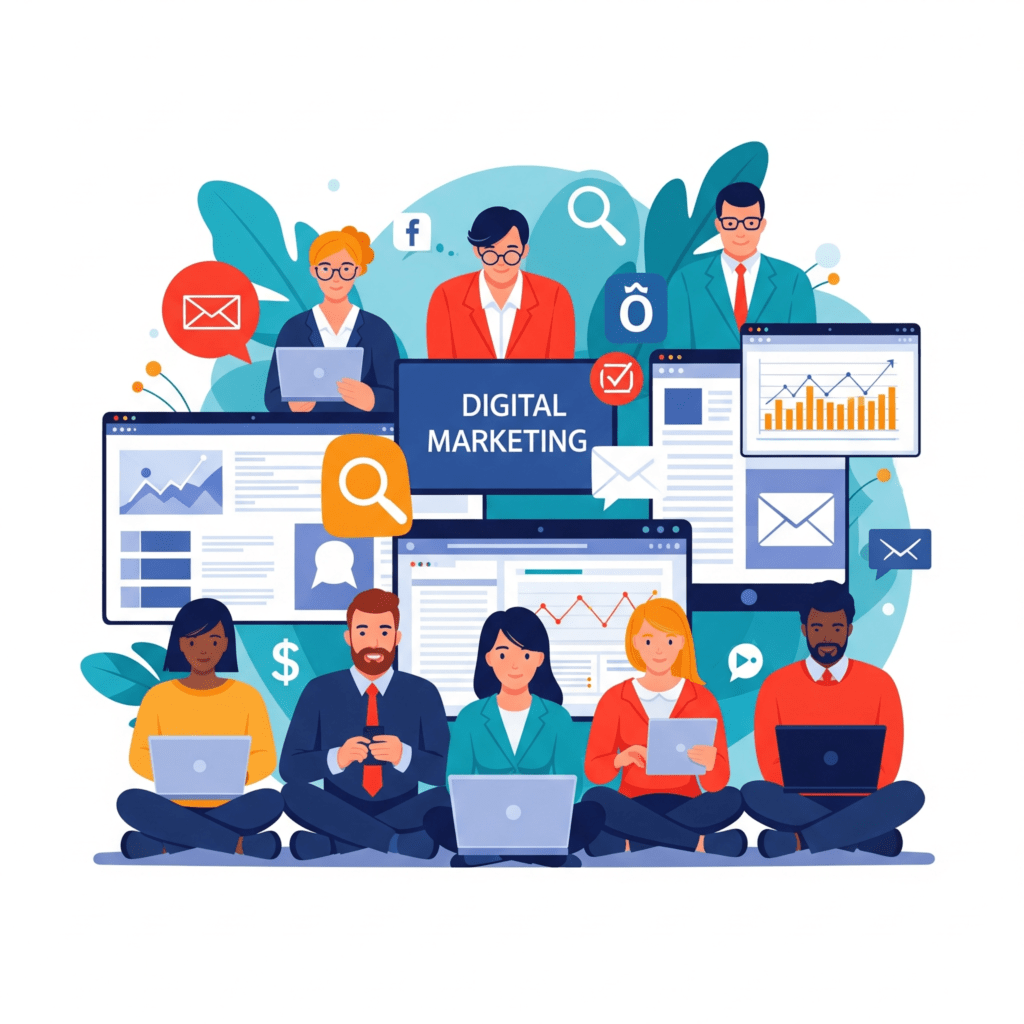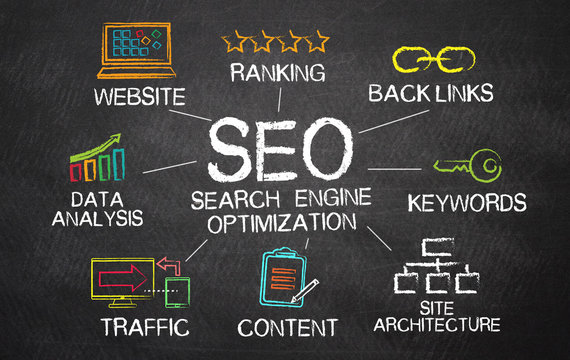Table of Contents
Digital Marketing is Transforming Business in 2025

Introduction: The Birth of a New Marketing Era
Hi, 2025. The digital space is not just a supplement to business—it’s the very backbone. Customer interaction, brand building, and lead generation all have brand-new playing rules. Old-school methods won’t do the trick anymore. New-age businesses live and breathe on clicks, impressions, shares, and conversions. Digital marketing today is the lifeblood of the new-age business.
In this longer blog article, we will examine how digital marketing is revolutionizing businesses in 2025—ranging from AI-driven personalization and hyper-automation to voice search and the emergence of Web3 technologies. As a startup, local business, or global organization, it is important that you comprehend these changes to scale.
1. Digital-First Consumer Behavior
Over 5.3 billion individuals on the planet are internet users in 2025. Customers no longer watch TV commercials or newspaper coupons—but scroll, search, and purchase online. And as a result, it has bred a new expectation: businesses need to be active, visible, and engaging in digital channels 24/7.
Key Trends:
- Buyers make 70-80% of the purchase decision online prior to getting involved with sales
- Consumers desire seamless experiences everywhere: mobile, web, and social
- Consumer reviews, influencer reviews, and consumer-generated content drive purchasing decisions
Effect: Companies with no digital presence are invisible to today’s consumer.
2. Artificial Intelligence (AI) and Automation
Artificial intelligence has evolved from a buzzword among marketers to being a business imperative. In 2025, AI is not just performing predictive analytics but is writing emails, generating ads, personalizing customer experience, and even creating short-form video content.
Real-World Applications:
- Chatbots provide 24/7 customer support and qualify leads
- Email tools personalize subject lines and timing based on behavior data
- AI content generators produce blogs, ad copy, and product descriptions in seconds
Result: Companies save time and money, raise engagement, and grow faster.
3. The Age of Hyper-Personalization
Personalization is not just about inserting a name into an email anymore. In 2025, it’s about providing experiences which are behavior, intent, and micro-moment tailored.
Examples:
- Netflix-style recommendations on eCommerce websites
- Dynamic websites that alter in response to the visitor
- Location-based promotions pushed to mobile in real time
Stat: Sales 6x higher for personalized emails than for generic ones.
4. Content Marketing is Now Visual and Interactive
The statement “content is king” remains true—but the throne now rests with video, reels, carousels, and interactive tools.
What Works in 2025:
- Short-form video (TikTok, Instagram Reels, YouTube Shorts)
- Visual show notes and transcripts with podcasts
- Quizzes, polls, and calculators
Impact: Companies that employ visual content have 86% more engagement than text-only content.
5. Social Media as a Sales Platform
Social media is no longer merely for follows and likes—it’s a shop. Instagram, TikTok, and Facebook now all have integrated stores and live commerce.
Social Commerce Stats:
- More than $1.2 trillion projected in worldwide social commerce revenue by 2025
- TikTok Shop now a significant eCommerce growth driver
Tip: Brands with fresh and engaging content dominate here.
6. SEO Has Changed: From Keywords to Conversations
Google’s AI-driven updates (SGE – Search Generative Experience) are revolutionizing search from keyword-stuffing to semantic search and conversational queries.
What’s Hot in 2025 SEO:
- Voice search optimization
- Long-tail keyword targeting
- Content optimized to show up in AI summaries and featured snippets
Tools to Use: Rank Math, Surfer SEO, Semrush, and Google Search Console
7. Email Marketing Is Smarter, Not Dead
In spite of social and AI, email is still an amazing channel—if executed well.
What’s New:
- Dynamic content blocks that shuffle up depending on the reader’s engagement
- Timing and A/B testing with AI support
- Behavior-driven automation flows
ROI: $42 generated for each $1 spent, particularly in eCommerce and SaaS niches.
8. Influencer Marketing Gets Micro and Authentic
2025 brands are moving away from macro-celebrities to niche creators with genuine connections.
Why it works:
- Micro-influencers (1K–100K followers) are activated at 60% higher rate
- People believe genuine stories rather than oil-slick ads
Strategy Tip: Collaborate with creators whose voice and audience connect with yours.
9. Web3 and Decentralized Marketing
Web3 is constructing an even more open, user-powered digital world. While still in the works, it’s already transforming loyalty, data privacy, and ownership.
Web3 Applications in Marketing:
- NFTs for special loyalty rewards and scarce access content
- Blockchain transparency in ad delivery and payment
- Community-powered content platforms
Takeaway: The early birds get community trust and brand uniqueness.
10. Data-Driven Decision Making Is Standard
In 2025, marketing without analytics is flying blind. Companies now need to make all decisions data-driven.
Key Metrics to Track:
- Customer Lifetime Value (CLV)
- Cost Per Acquisition (CPA)
- Return on Ad Spend (ROAS)
- Customer Engagement Score
Tools Used: Google Analytics 4, Hotjar, Tableau, HubSpot, Meta Ads Manager
11. Omnichannel Becomes Seamless
Buyers today don’t think about channels—experiences are what matter. In 2025, wonderful brands have smooth transitions between touchpoints.
Real Examples:
- User sees ad on Instagram, website visited, and retargeted on YouTube
- Cart reminders via email + WhatsApp
- Loyalty rewards available between app and offline store
Outcome: Better brand recall and customer loyalty
12. Mobile-First is No Longer Optional
With 76% of consumers reaching brands via mobile, your campaigns and site need to be optimized for the small screen first.
Must-Haves in 2025:
- Lightning-fast mobile load times
- Mobile-friendly email layouts
- Tap-to-call and chat integrations
Google’s Priority: Mobile-first indexing is the new default.
13. Ethical Marketing and Data Privacy
With growing awareness of data rights among consumers, brands are moving towards ethical and permission-based marketing.
Best Practices:
- Transparent privacy policies
- GDPR/CCPA compliant registration forms
- “Do Not Track” compliance
Long-Term Benefit: Trust = loyalty. Brands that safeguard user information create long-term buyers.
14. E-Commerce and Marketing Become Indistinguishable
Shopify, WooCommerce, and Amazon now have marketing tools like never before.
Examples:
- Automatic email sequences triggered by product views
- Live chat recommendations based on browsing history
- Retargeting tied in with abandoned carts
Outcome: Better shopping experience = more conversions
Conclusion: Businesses Need to Catch Up or Fall Behind
Digital marketing isn’t a department anymore—it’s a business strategy. By 2025, businesses that make this transition aren’t just surviving—they’re thriving. From AI to influencers, from SEO to social commerce, the technology is changing. But the ultimate goal remains the same: reaching your audience in a way that matters.
Whether you are an entrepreneur, marketer, or business leader, today is the time to reimagine your niche, invest in digital infrastructure, and push your niche forward.
FAQs: Digital Marketing in 2025
1. Why is digital marketing important in 2025?
Because that’s where your audience resides—online. With billions of users browsing, shopping, and searching every day, companies need to be present digitally to remain pertinent and competitive.
2. What’s popular in digital marketing this year?
This year in 2025, everything’s about:
- AI automation
- Personalized content
- Voice search
- Short-form videos
- Social commerce
- Data-driven campaigns
These trends enable brands to reach customers more quickly and wisely.
3. How does AI enhance digital marketing?
AI automates repetitive tasks—such as sending emails or responding through chatbots—and becomes more personalized in marketing. It enables companies to work smarter, not harder.
4. What is hyper-personalization?
It’s when your brand talks directly to every user—providing product recommendations, website content, or emails tailored to their behavior and interests. Personalized = powerful.
5. Is SEO still important in 2025?
More than ever. New SEO is all about voice queries, user intent, mobile-friendliness, and useful content. It’s still the foundation of long-term online exposure.
6. Why is short-form video so successful?
Because attention is fleeting. Brief videos on TikTok, Instagram Reels, or YouTube Shorts grab quicker—and frequently convert better than lengthy content.
**7. Can social media really lead to sales?
Yes. With in-app stores, live selling, and product badges, platforms such as Instagram and TikTok are converting views into actual purchases.
8. What’s Web3 marketing in a nutshell?
It’s about empowering users. Consider NFTs, rewards for community, and transparency around data—excellent for trust and loyalty building.
9. Why go mobile-first?
Because many people surf on phones. A responsive, quick mobile site makes users happy—and benefits your Google rank as well.
10. What’s the big digital takeaway for 2025?
Get ready to adapt quickly. Leverage AI, video, SEO, and personalized experience. The digital future of business is here.


